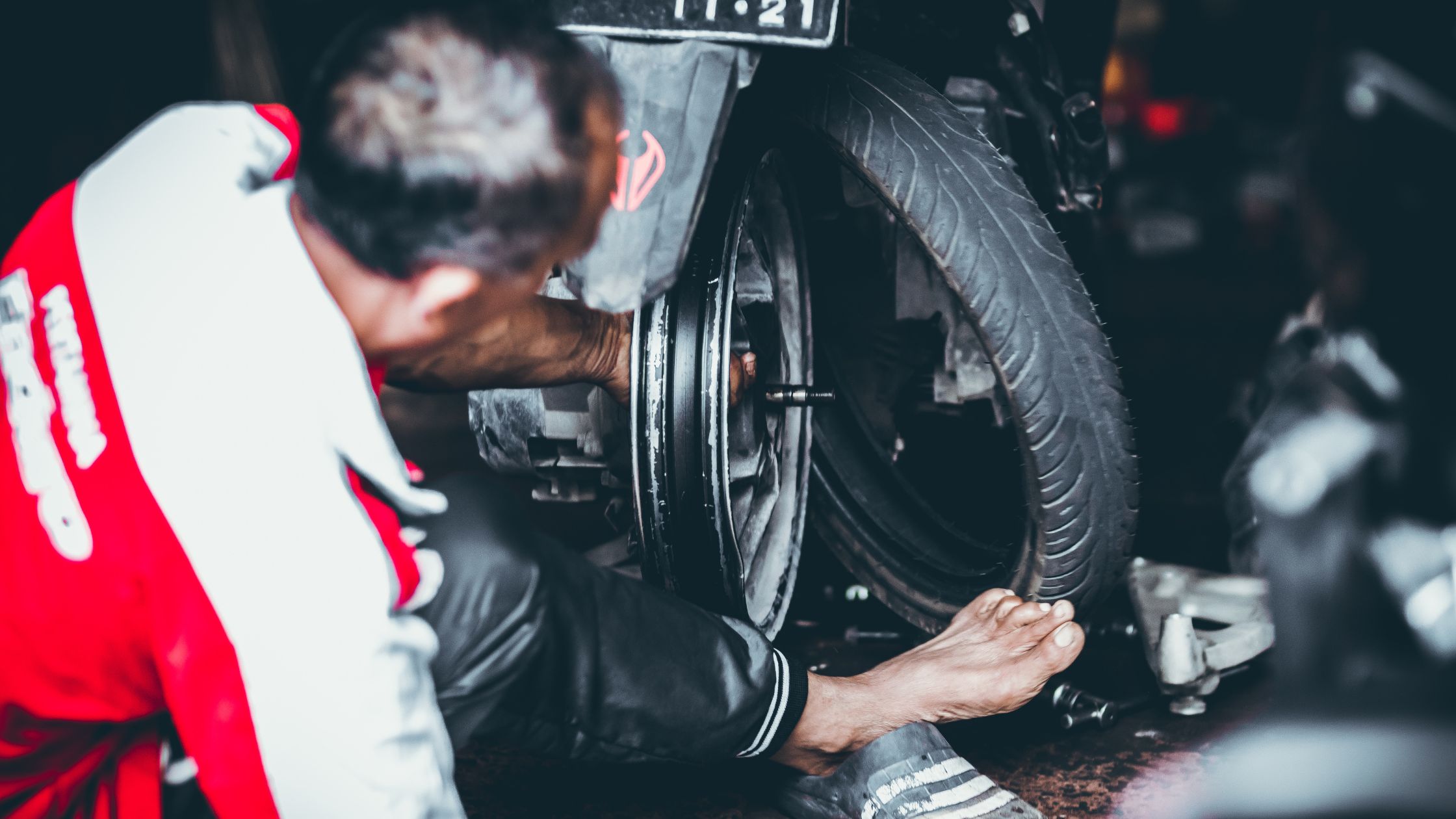Jika anda sedang mencari How To Control Pwm Motor Arduino, anda berada di tempat yang tepat! Disini saya akan mencoba membahas beberapa pertanyaan mengenai How To Control Pwm Motor Arduino.
How do I control my Arduino motor?
Connect 5V and ground of the IC to 5V and ground of Arduino. Connect the motor to pins 2 and 3 of the IC. Connect IN1 of the IC to pin 8 of Arduino. Connect IN2 of the IC to pin 9 of Arduino. Connect EN1 of IC to pin 2 of Arduino. Connect SENS A pin of IC to the ground.
How PWM can be used to control the speed of DC motor?
As its name suggests, pulse width modulation speed control works by driving the motor with a series of “ON-OFF” pulses and varying the duty cycle, the fraction of time that the output voltage is “ON” compared to when it is “OFF”, of the pulses while keeping the frequency constant.
How can we change the speed of a DC motor using PWM co4?
How can we change the speed of a DC motor using PWM? Explanation: We can change the speed of a DC motor using PWM by changing the duty cycle of PWM. Changing duty cycle means changing ON and OFF timing of PWM. Even if amplitude of PWM is fixed by increasing the ON time of PWM increases the speed of the DC motor.
Can any DC motor be controlled with PWM?
Pulse-width modulation (PWM) or duty-cycle variation methods are commonly used in speed control of DC motors. The duty cycle is defined as the percentage of digital ‘high’ to digital ‘low’ plus digital ‘high’ pulse-width during a PWM period. Fig. 1 shows the 5V pulses with 0% through 50% duty cycle.
How does PWM affect RPM?
The PWM duty cycle is used to vary the speed of the motor by controlling the motor terminal voltage. The motor voltage and revolutions per minutes (RPM) obtained at different duty cycle rates. As the duty cycle increases, more voltage is applied to the motor.
How do you convert PWM to RPM?
If 100% PWM duty-cycle equals 550RPM then the simple way to model that is (RPM = %duty-cycle * 5.5) or (%duty-cycle = RPM / 5.5).
How can servo motor be controlled?
Servos are controlled by sending an electrical pulse of variable width, or pulse width modulation (PWM), through the control wire. There is a minimum pulse, a maximum pulse, and a repetition rate. A servo motor can usually only turn 90° in either direction for a total of 180° movement.
How does Arduino control servo motor speed?
Arduino Code By using map() and millis() functions, we can control the speed of servo motor smoothly without blocking other code. The below example shows how to move the servo motor from 30° to 90° in 3 seconds.
Why PPM is better than PWM?
In PWM width of the pulses shows proportionality with the amplitude of the message signal. Whereas in PPM the position of the pulses is proportional to the amplitude of analog modulating signal. PAM technique shows low immunity towards the noise.
What generates PWM?
The easiest way to generate PWM signals is via a microcontroller. Modern microcontrollers, whether 8-bit, 16-bit, or 32-bit are equipped with a PWM module. The PWM module works by setting the voltage level of the digital pin, incrementing the timer to preset pulse width, and toggling the pin for the remaining cycle.
What is the benefit of PWM?
The main advantage of PWM is that power loss in the switching devices is very low. When a switch is off there is practically no current, and when it is on and power is being transferred to the load, there is almost no voltage drop across the switch.
What voltage is PWM?
Pulse-width modulation (PWM) allows the BASIC Stamp (a purely digital device) to generate an analog voltage. The basic idea is this: If you make a pin output high, the voltage at that pin will be close to 5 V. Output low is close to 0 V.

How do you convert PWM to DC?
Step 1: Pulse Width Modulation. Step 2: RC Filter. The RC filter has two values that determine how it will modulate the incoming PWM signal: R, the resistance in Ohms, and C, the capacitance in Farads. Step 4: Ripple and Time of Response to Change in Voltage. Step 5: Frequency Analysis.
How do you choose PWM frequency?
As a rule of thumb, you want the frequency of your PWM signal to be greater than 5 over 2 pi tau, where tau is the electrical time constant for your desired motor. If you go to high, however, the transistors inside of your driver may experience thermal limitations due to switching losses.
Which timer is used in PWM mode?
We will use the simplest timer, TIMER0 for PWM generation. So we have an 8 bit counter counting from 0 to 255 and then resetting to 0 and so on.
How do PWM motors work?
As its name suggests, pulse width modulation speed control works by driving the motor with a series of “ON-OFF” pulses and varying the duty cycle, the fraction of time that the output voltage is “ON” compared to when it is “OFF”, of the pulses while keeping the frequency constant.
How the speed of stepper motor can be controlled?
Speed of stepper motors are controlled by input pulses They use open-loop control, and are operated by having a controller generate pulses that are input to a driver, which in turn supplies the drive current to the motor.
What are the two signals used in PWM?
One of the simplest methods of generating a PWM signal is to compare two control signals, a carrier signal and a modulation signal. This is known as carrier-based PWM. The carrier signal is a high frequency (switching frequency) triangular waveform. The modulation signal can be any shape.
Can PWM control RPM?
However, when using only one PWM fan, a designer can program a desired temperature/RPM curve by simply changing the PWM controller software.
Can you control a brushless motor with PWM?
For brush motors, 2-wire PWM is the most common method for control, and it is very effective. It is similarly effective with brushless DC (BLDC) motors, but it does present some limitations.
What happens if PWM frequency is too high?
Too much higher and you will be heating up your switches. You may also want to go towards the higher end to get out of the audible range.
Does frequency PWM affect motor speed?
When the PWM frequency is lowered, the motor’s coils extract more energy from the pulsed PWM signal. That means that the motor will start spinning at a lower equivalent voltage and will operate with improved torque at low speeds.
Can you change the speed of a motor?
Although they are constant speed devices, AC motor speeds can vary if the frequency, input voltage, or the windings that make the motor rotate are changed. A common and efficient means of changing a motor’s speed is to vary the frequency by use of an inverter as the power source.
What is the frequency of PWM DC motor?
As a rule of thumb, most small brushed DC motors will operate nicely with a PWM frequency of 50Hz to 100Hz and slow decay mode.
Terimakasih telah membaca How To Control Pwm Motor Arduino, semoga jawaban dari pertanyaan anda telah saya jawab semua. Semoga bermanfaat!
 Mobil Series Situs Mobil Terbaik se-antero Bintaro
Mobil Series Situs Mobil Terbaik se-antero Bintaro
